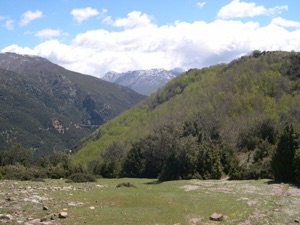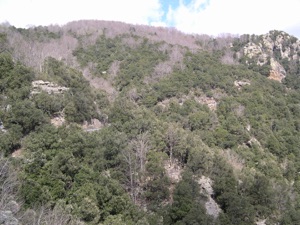Understanding the structure, function and persistence of relict populations under climate change

Climate change-type drought is disrupting population performance and the distribution of tree species across the globe. Biogeographical theory suggests that rising global temperatures should generally drive species to move poleward and upward in elevation as they track the climates to which they are adapted. Consequently, one fundamental climate change prediction is that population loss and regional extinctions of tree species should occur in the most drought prone areas of their ranges (i.e. the rear range-edge). This prediction assumes that rear-edge populations are marginal with higher risk of extinction than those populations at the core of the species' range and that they occur as smaller populations in less favorable habitats. This assumption is well supported in the literature documenting altered tree growth and mortality in response to increased drought conditions. However, evidence of rear-edge populations persisting in the most marginal and drought-prone habitats is increasingly accumulating. For example, relict populations are one of the most impressive cases of rear-edge population persistence as they persist geographically isolated in marginal climates significantly hotter and dryer than those generally tolerated by the species. The disparity of documented responses at species rear range-edges is potentially a result of complex ecological and evolutionary factors that determine population dynamics, and points out the need for a proper understanding and assessment of marginality and the identification of the key mechanisms implied in population persistence.
In this project we develop a framework for research design and analysis at species' rear range-edges, and apply this advance to improve our understanding of marginality and rear-edge population dynamics. We focus on the rear range-edge of the European beech tree (Fagus sylvatica L.), a widespread species with a high ecological importance that is highly drought sensitive. This species’ rear range-edge occurs along the ecotone between the Mediterranean and temperate biomes, where beech populations are distributed across a fragmented landscape and along highly heterogeneous ecological conditions. In this region, relict beech populations persist geographically isolated in marginal habitats apparently out of the species' physiological tolerances. We combine field, molecular and modelling approaches under a conceptual and methodological framework for a better understanding and assessment of marginality in order to refine predictions of population decline in response to climate change at species rear range-edges.
The field-based research looks at the size structure, demography (i.e. growth and survival) and canopy decline of populations, as well as tree physiological traits to test if populations inhabiting the most marginal habitats (i.e. the most drought prone areas of the species range) show higher levels of mortality and canopy decline, as well as altered tree growth and limited physiological performance to increased drought stress. Furthermore, we also monitor and characterise the micro-climatic conditions of rear-edge populations, and test if microclimates contribute to the local persistence of some populations under unfavourable regional climates.
The low altitude ‘trailing edge’ of the distribution of beech in the Montseny Mountains, Northeast Spain
Related publications
Vilà-Cabrera A, Martínez-Vilalta J, Retana J (2015) Functional trait variation along environmental gradients in temperate and Mediterranean trees. Global Ecology and Biogeography, 24, 1377-1389.
Peñuelas J, Sardans J, Estiarte M, Ogaya R, Carnicer J, Coll M, Barbeta A, Rivas-Ubach A, Lluisà J, Garbulsky M, Filella I, and Jump AS (2013). Evidence of current impact of climate change on life: a walk from genes to the biosphere. Global Change Biology 19, 2303-2338
Hampe A, Jump AS (2011). Climate relicts: past, present, future. Annual Review of Ecology, Evolution, and Systematics, 42, 313-333.
Jump AS, Mátyás C, Peñuelas J (2009). The altitude-for-latitude disparity in the range retractions of woody species. Trends in Ecology and Evolution, 24, 694-701.
The molecular approach looks at the genetic characteristics (i.e. differentiation, diversity, etc.) of rear-edge populations across ecological and habitat fragmentation gradients to test if long-term geographical isolation of rear-edge populations is associated to an increased genetic isolation and the loss of genetic diversity. Finally, the modelling approach aims to study tree growth dynamics using an extensive network of dendroecological data collected across the entire species distribution (including rear-edge, range-core and leading-edge populations), and predict population responses under different scenarios of climate change and evaluate future population loss and species range shifts.
This project represents a significant advance in population ecology and biogeography, while the information gained will be relevant to improve our ability to understand the impacts of climate change at the rear-edge of species distributions and to predict their consequences, from regional extinctions and trophic cascades to carbon and water dynamics. The work was funded by the EU through a Marie Skłodowska-Curie Individual Fellowship (H2020-MSCA-2014; 656300-PERS‒RELICT‒CLIM) to Albert Vilà-Cabrera, and the research continues for the next years with the support of the Anniversary Fellowship Programme of the University of Stirling. Results in Brief are published here



